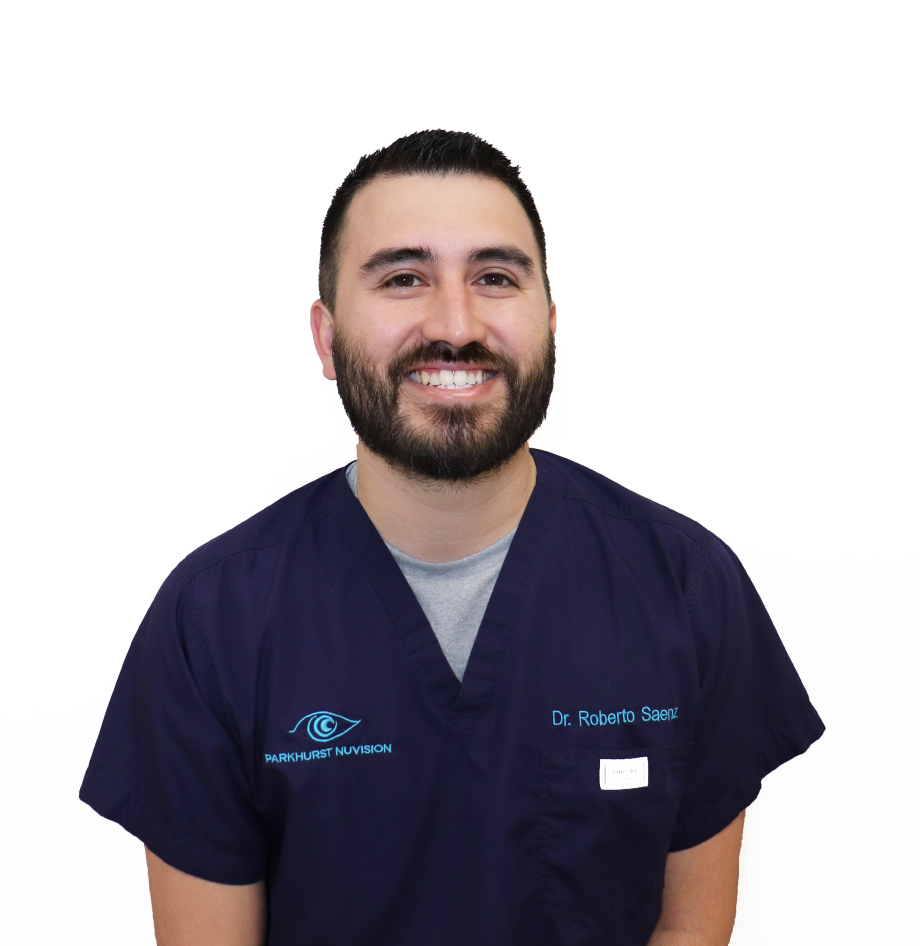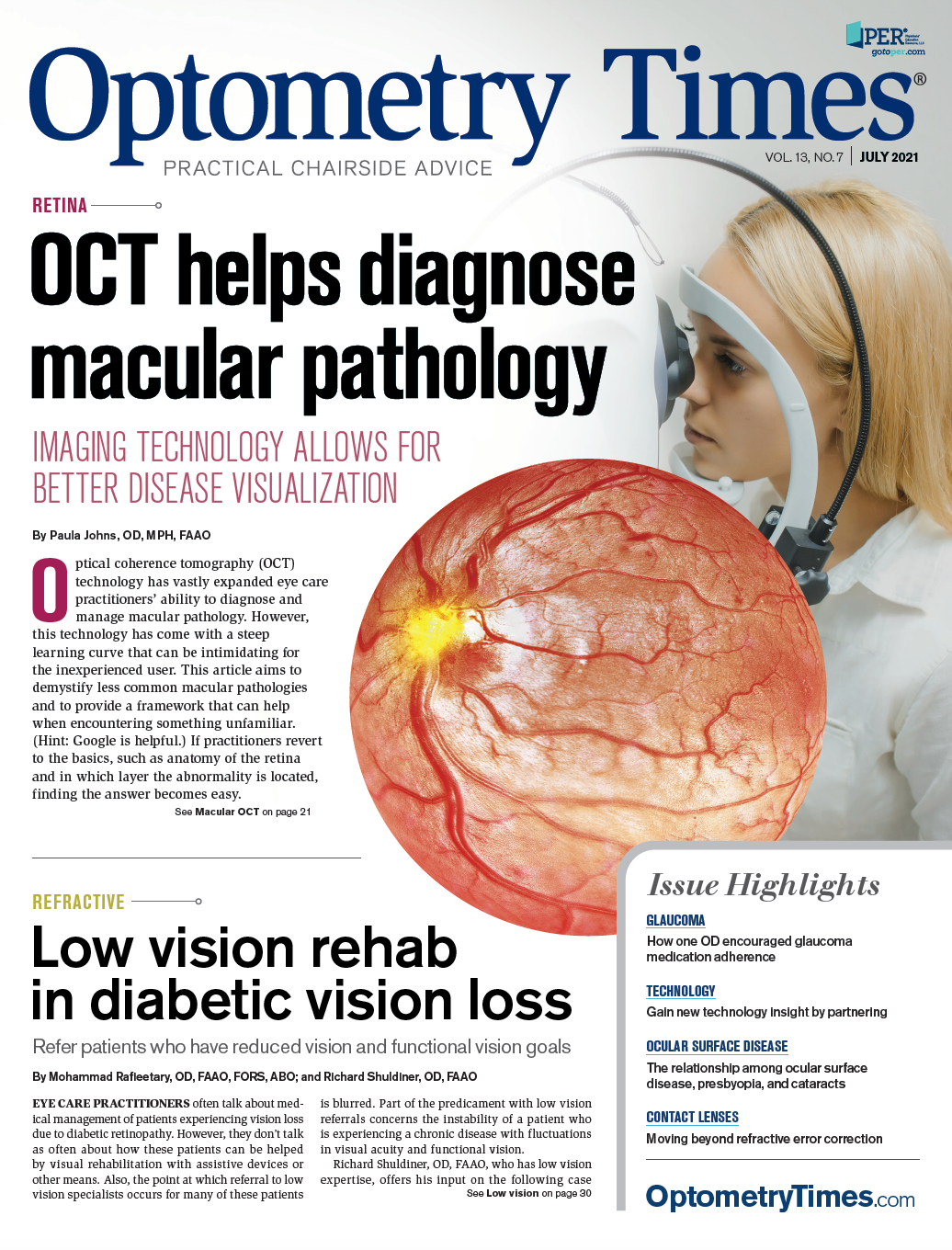Gain new technology insight by partnering
Refer patients for procedures that, under study, can differentiate a practice

Roberto “Bobby” Saenz II, OD, MS, FAAO

As ophthalmic surgeries and techniques continue to evolve, patients often ask their physicians about new or investigational procedures. Significant advantages can be had by partnering with practices that are heavily involved in research.
Patients may have the opportunity to gain early access to technology that isn’t widely available, sometimes at a reduced cost.
Additionally, referrals are an opportunity to learn early about new procedures and differentiate a practice as one that offers (by extension) the latest and greatest technology.
Approval status
It is important to know the approval status of new technology when counseling patients about or referring them for a specific procedure. Drugs and devices that have gone through the FDA-approval process and are used for the indications approved by the agency are considered approved and “on label.”
Because the FDA does not regulate the practice of medicine, doctors sometimes use approved products differently than described in the labeling.
Many examples of this exist in eye care, including postcataract antibiotics (most of which are on label to treat bacterial conjunctivitis) and intravitreal injections of anti-vascular endothelial growth factor (VEGF) drugs that have been approved for cancer indications but not for age-related macular degeneration.
Optometrists need to be careful about referring patients to practices that use unapproved products that have not been FDA approved or are not a part of an FDA study.
If patients are participants of an FDA study (eg, a phase 2 or phase 3 trial), then they typically do not pay for the treatment, so joining a study can be a financial as well as potential clinical benefit.
Legal advice cautions that knowingly referring patients for unapproved treatments that aren’t part of such a study could mean taking on risk or legal liability if the procedure doesn’t go well.
An example of this is corneal collagen cross-linking for keratoconus. The FDA-approved iLink procedure (Glaukos) uses a drug-device combination that is indicated for the epi-off treatment of progressive keratoconus.
The use of a non-FDA–approved device or a riboflavin solution other than Photrexa Viscous (riboflavin 5’-phosphate in 20% dextran ophthalmic solution) or Photrexa (riboflavin 5’-phosphate ophthalmic solution) for cross-linking would be considered unapproved and carry unnecessary risk, especially with medical plans now covering cross-linking.
Stay informed
It’s important to stay informed not only about approval status but about clinical outcomes and postapproval studies.
Look for published results of pivotal trials conducted in support of FDA approval. In some cases, by the time a new technology has been approved in the United States, a substantial body of clinical data already exists from outside the country.
For example, although small-incision lenticule extraction, or SMILE, is relatively new in the United States—it was approved 4 years ago—3 million cases have been performed worldwide.1
Similarly, cross-linking was considered the standard of care internationally for more than a decade before it was approved in this country.2
When personal experience is limited, international data can give optometrists further confidence about recommending a new procedure or sending the patient for a consultation with a surgeon who offers it.
Of course, it’s not possible to stay abreast of new developments in every area of eye care, especially when many trials aren’t widely publicized. ODs should consider associating with a practice that is doing research—and let them know you are interested and want to be kept updated about clinical studies.
In my experience, such an association has been valuable for our optometric partners who have referred patients to gain early insights
into the nuances of minimally invasive glaucoma surgery (MIGS) and other new refractive, cataract, and dry eye technologies.
Communication between the practice doing research and referral partners about study goals, expectations for follow-up, and outcomes is key. The bottom line:
Choose a referral partner who communicates well and will offer patients not only early access but a track record of achieving good outcomes in similar cases.
Cost and coverage
Clinical trials offer patients an opportunity to save money and qualify for a great procedure.
For example, over the years, my practice has participated in many studies of MIGS that have helped patients reduce the number of drops they need on a chronic basis.
Currently, patients with glaucoma are participating in a study evaluating a next-generation intraocular implant.
Optometrists who practice in rural areas often assume their patients can’t participate in clinical studies because they live too far away. But as long as the patient is willing to travel for follow-up exams, many studies include financial reimbursement for travel expenses or payment for the extra time the patient spends in the office.
Once a technology is approved for use in the United States, it is not unusual for reimbursement to lag behind. After cross-linking was approved, for example, it was often not considered a covered service by insurance carriers—patients had to pay out of pocket, with prices similar to the cost of LASIK.
But that has changed as insurers have become more familiar with how cross-linking can slow or halt the progression of keratoconus and save money in the long run.3-5 Keep in mind that investigational or unapproved treatments are typically not covered by private insurers, Medicare, or Medicaid.
Conclusion
There has never been a better time for optometrists to get involved with research and clinical studies because many exciting new technologies are entering the market or are still in the pipeline.
For example, Allergan, Novartis, Visus Therapeutics, and others companies are working on presbyopia-correcting drops that are designed to help patients see up close through pupillary miosis to extend the depth of focus or via breaking down disulfide bonds in the lens itself to make it more flexible.
This new category of presbyopia treatment, along with continued advancements in intraocular lens technology, cross-linking, MIGS, and sustained-release drug delivery, holds the potential to benefit patients and differentiate both surgical and referral practices.
About the author
Roberto “Bobby” Saenz II, OD, MS, FAAO,
is an optometrist at Parkhurst Nuvision in San Antonio, Texas.
References
1. Zeiss announces 3 million eyes treated with SMILE. Eyewire News. June 9, 2020. Accessed June 8, 2021. https://eyewire. news/articles/zeiss-announces-3-million-eyes-treated-withsmile/
2. Shetty R, Pahuja NK, Nuijts RMM, et al. Current protocols of corneal collagen cross-linking: visual, refractive, and tomographic outcomes. Am J Ophthalmol. 2015;160(2)243- 249. doi:10.1016/j.ajo.2015.05.019
3. Salmon HA, Chalk D, Stein K, Frost NA. Cost effectiveness of collagen crosslinking for progressive keratoconus in the UK NHS. Eye (Lond). 2015;29(11):1504-1511. doi:10.1038/ eye.2015.151
4. Leung VC, Pechlivanoglou P, Chew HF, Hatch W. Corneal collagen cross-linking in the management of keratoconus in Canada: a cost-effectiveness analysis. Ophthalmology. 2017;124(8):1108-1119. doi:10.1016/j.ophtha.2017.03.019
5. Lindstrom RL, Berdahl JP, Donnenfeld ED, et al. Corneal cross-linking versus conventional management for keratoconus: a lifetime economic model. J Med Econ. 2021;24(1):410-420. doi:10.1080/13696998.2020.1851556

Newsletter
Want more insights like this? Subscribe to Optometry Times and get clinical pearls and practice tips delivered straight to your inbox.